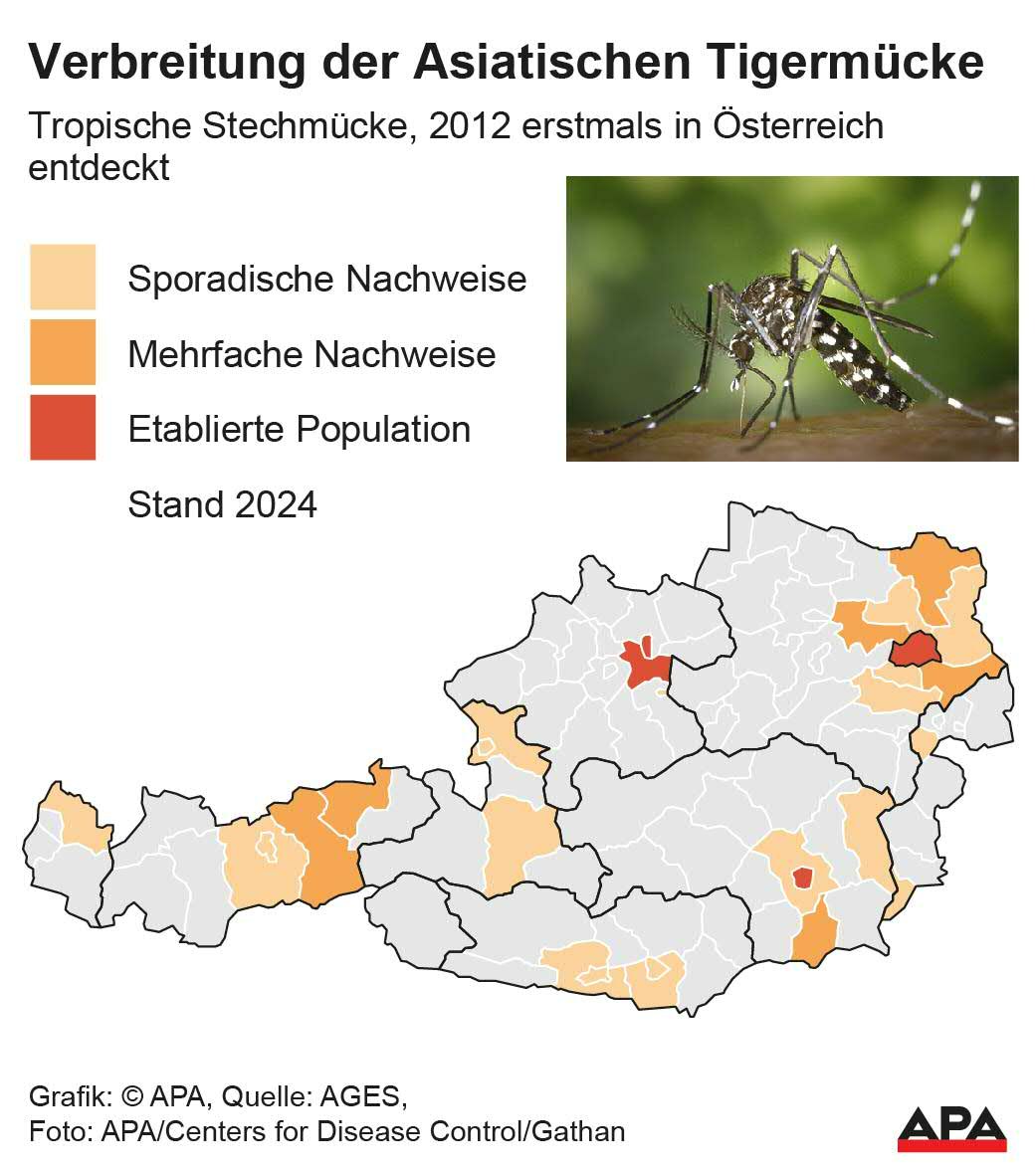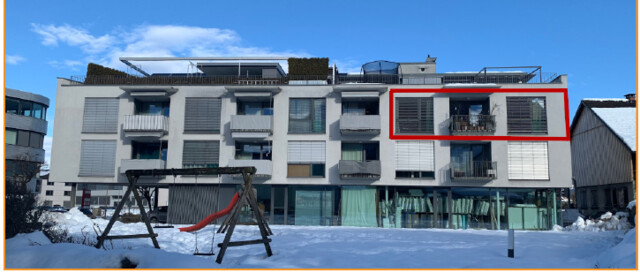Arrived to Stay: Introduced Mosquitoes with New, Concerning Pathogens
The first sightings of bush mosquitoes and tiger mosquitoes in Austria occurred from the years 2011 and 2012, as stated in the 2024 report for the research project "Mosquito-Alert" by AGES. In 2017, the first evidence of the Korean bush mosquito followed. The tiger mosquito (Aedes albopictus), in particular, with its distinctive pattern that gives it its name, has been very prominently represented for several years, especially in larger urban areas such as Vienna, Graz, or Linz.
New Mosquito Species Brought Worrying Pathogens
This is not only annoying because they - like the Japanese bush mosquito, which is a rarity in Austria - like to bite during the day, but also concerning for health: The new mosquito species can carry and transmit over 20 different pathogens, such as the Chikungunya or Dengue virus.
The latter pathogen was proven to be responsible for several hundred infections and twelve deaths so far in Italy this summer, as stated in a release from the University of Vienna regarding the new publication published in the journal "Nature Communications." The Chikungunya virus is also on the rise in northern Italy. The European Centre for Disease Prevention and Control (ECDC) reported a new record for mosquito-borne viruses in the EU this summer.
Against this background, researchers from the University of Lisbon (Portugal), led by Franz Essl from the Department of Botany and Biodiversity Research at the University of Vienna, have undertaken a historical overview of the spreading pests. The current overview of what are "successful" introductions from the insects' perspective clearly shows that many species have been able to expand their territories: "In total, 45 species of disease-transmitting mosquitoes have been introduced worldwide into regions where they did not originally occur. Of these, 28 species have successfully established themselves - significantly increasing the risk of disease transmission. Particularly concerning is the strong upward trend: Since the year 2000 alone, twelve species have been registered in new areas for the first time," Essl is quoted as saying.
Global Trade as the Main Driver
The team identified global trade as the main driver - particularly its steady increase over the past decades. For example, larvae can travel long distances in paints on car tires that are traded across regions. Similarly favorable conditions are offered by aquatic plants traded internationally as ornamental plants. In their new environments, the chances of mosquitoes surviving long-term have increased due to the generally higher temperatures. Climate change is thus playing into their hands.
Looking at how trade continues to increase, "it is very likely that new species will continue to be introduced in the coming years, with consequences that are difficult to predict," said co-author Anna Schertler. Due to the rapidly spreading mosquito species, "even in temperate regions like Austria," increasing health risks are to be expected. Therefore, it is important to implement measures in trade to reduce the risk of introduction, according to the researchers. They admit that it will be very difficult to eradicate already established insect species. Nevertheless, their new distribution must be documented and contained as much as possible. This is being attempted, for example, in a pilot project in Graz, where around 600,000 sterile male tiger mosquitoes were released in late summer. These are supposed to mate with the females, but no offspring will hatch from the resulting eggs.
"Even Slowed Spread Reduces Health Risks"
"The release of sterile males is, in my opinion, a sensible method," said Essl to APA. To contain or slow the spread of the tiger mosquito in Austria, several approaches are likely needed, in addition to active control, such as the release of sterile males, targeted monitoring like "Mosquito-Alert" and avoiding "open water surfaces that serve as breeding habitats in affected areas." For the latter, appropriate public information is especially important. "Even if eradication is unlikely, a slowed spread also reduces health risks," said the ecologist.

(APA/Red.)
This article has been automatically translated, read the original article here.
Du hast einen Hinweis für uns? Oder einen Insider-Tipp, was bei dir in der Gegend gerade passiert? Dann melde dich bei uns, damit wir darüber berichten können.
Wir gehen allen Hinweisen nach, die wir erhalten. Und damit wir schon einen Vorgeschmack und einen guten Überblick bekommen, freuen wir uns über Fotos, Videos oder Texte. Einfach das Formular unten ausfüllen und schon landet dein Tipp bei uns in der Redaktion.
Alternativ kannst du uns direkt über WhatsApp kontaktieren: Zum WhatsApp Chat
Herzlichen Dank für deine Zusendung.








